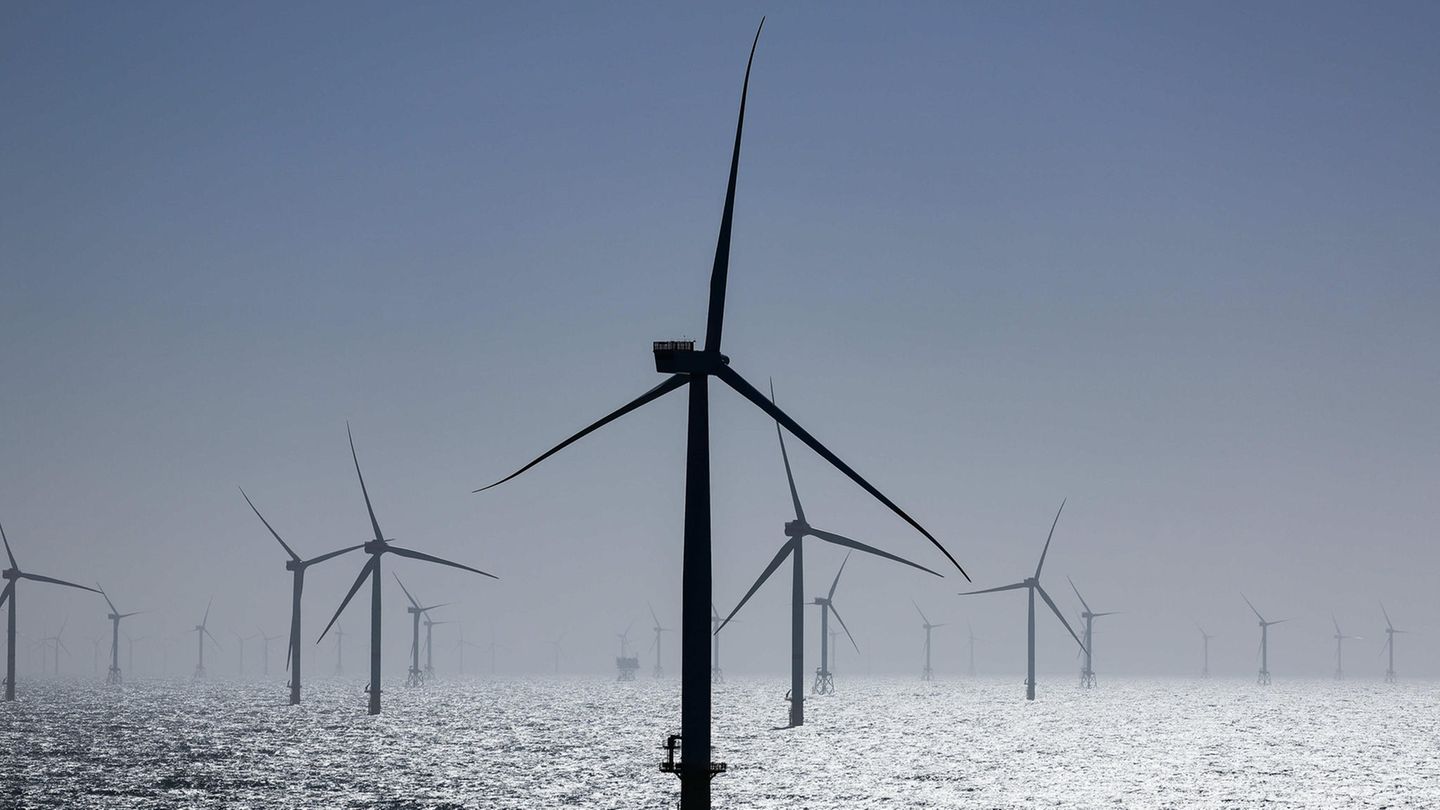At least 50 civilian ships from Russia are often in the vicinity of European offshore wind farms, power and data cables with their transponders switched off. Northern European TV stations are reporting on a secret fleet disguised as research ships spying on critical infrastructure.
Kevin Schulte
This article first appeared on ntv.de
A masked man wearing a bulletproof vest stands on a ship. In the middle of the Kattegat, the transition from the North and Baltic Seas between Denmark and Sweden. The man carries a rifle and looks down from the railing at reporters from northern European television stations who have approached the huge ship in a motorboat. “Shit, the gun isn’t aimed at us, is it?” one of the journalists asks his colleagues. One of the public television stations from Denmark, Norway, Sweden and Finland begins with this scene.
The huge ship the reporters are looking at is the Admiral Vladimirsky. According to the , it is a research ship that has been designed for ocean observations. However, the recordings and research by the northern European broadcasters suggest a completely different task. Accordingly, the ship is on a secret espionage mission.
The Nordic reporters claim that the “Admiral Wladimirsky” is one of at least 50 Russian ships that have been disguised as a research ship or fishing trawler, mainly in the North Sea and have repeatedly attracted attention in the past ten years with “suspicious driving behavior”. This is how the Danish Broadcasting Corporation (DR) describes it after discussions with experts and secret service agents.
Accordingly, the ships map European offshore wind farms, gas pipelines, power and internet cables. According to the they are equipped with underwater surveillance devices and are looking for possible locations for acts of sabotage.
Military radios in the fishing trawler
In early November, the Norwegian police routinely checked two Russian fishing vessels in Kirkenes, just off the Norwegian-Russian border. In locked rooms of the alleged fishing trawlers “Lira” and “Ester”, the officials discover hidden military radios and a man sitting next to them who apparently did not want to be discovered. The two ships are said to have previously fished off the Faroe Islands. Belonging to the Kingdom of Denmark but autonomously, the archipelago still has a fishing agreement with Russia.
Reporters from the Nordic broadcasters received intercepted radio messages from the Russian Navy from intelligence sources. So they could look behind the facade of the research ships and fishing trawlers. One of the sources, a former member of the British Royal Navy, is certain: the fleet is not only intended to map European infrastructure, but also to attack it if the worst comes to the worst. “I mean, what would happen if the power went out all over Copenhagen or if there was a blackout on the London Stock Exchange?” the expert asks rhetorically.
“In the event of a conflict with the West, they are ready and they know where to strike if they want to paralyze Danish society,” Anders Henriksen, head of counterintelligence at the Danish secret service, said.
“A single bomb can destroy a wind farm”
The documentary reports that the Russian ships have suddenly been noticed in the vicinity of NATO exercises in recent years, for example, when they have sailed deep into inland fjords without calling at ports, or when they have strangely often crossed important submarine cable routes .
However, the shady ships did not show up on the radar: In order to remain undetected, the ships had turned off their position trackers. Instead, the locations were regularly radioed to a Russian naval base. The secret services of the northern European countries have managed to intercept and listen to the communications of the ghost ships – for example, the secret voyage of the “Admiral Vladimirsky” could be traced.
Accordingly, the 150 meter long ship left Saint Petersburg on November 1st and reached the north coast of Scotland on November 10th. There are two large offshore wind farms that provide electricity to more than a million people. The “Wladimirsky” remained on site for two days before sailing a few nautical miles south, where what will become the largest offshore wind farm in Scotland and Great Britain is currently being built. Here, too, the Russian ship drifted almost motionless in the water for two days. “The ship has likely mapped power cables on the seabed near the offshore wind farms. There will be bundles of cables where a single bomb can destroy the entire wind farm,” analyzes marine analyst HI Sutton in Nordic media DR’s documentary, NRK, SVT and Yle.
The ship then continued its journey south. There are also two large wind farms near London at the mouth of the Thames. After a day of slow sailing off England, the “Wladimirsky” turned around and sailed back to the Scottish part of the North Sea and from there past two Danish oil fields into the Kattegat. There, between Denmark and Sweden, a Danish offshore wind farm is currently being built, which the “Admiral Wladimirsky” apparently also examined for a few days before sailing on towards home and entering the port of the Russian exclave of Kaliningrad on November 30th .
Espionage also off the Dutch coast?
Apparently it was not the first spy tour of the “Wladimirsky”. In the autumn of last year, she was also seen off the Belgian and Dutch coasts in the North Sea. “Russian ships tried to spy on our critical infrastructure. But we sent out the coast guard and they escorted the ships away. The Russians’ espionage was unsuccessful, but attempts were made,” commented Jan Swillens, head of Dutch military intelligence.
Incidents from the past year show why infrastructure at sea is so important. In early 2022, a fiber optic cable was severed between the Norwegian archipelago of Spitsbergen and the mainland. The cable powered the world’s largest commercial ground station for satellite communications. The Norwegian police assume sabotage, but no one has been officially accused.
Sometimes enemy, sometimes friend
Russia and China – Stations of an uncanny friendship
The most obvious and well-known instance of critical infrastructure being sabotaged is the destruction of the Nord Stream pipeline in September. Initially, Russia was accused of being responsible for blowing up the gas pipe. In the meantime, reports have emerged that pro-Ukrainian actors may have been involved. But there were doubts about that, too. Recently, the Danish military has published photos showing that four days before the explosions, a Russian special ship with a mini submarine on board was very close to the pipeline.
On July 30 last year, for Navy Day, Russia revised its. In order to protect national interests, civilian ships should also be able to be integrated into the naval forces in the event of war. From cargo and research ships to fishing trawlers, everything that moves on the sea can be used. The alleged acts of sabotage are possibly a first taste.
Source: Stern
I have been working in the news industry for over 6 years, first as a reporter and now as an editor. I have covered politics extensively, and my work has appeared in major newspapers and online news outlets around the world. In addition to my writing, I also contribute regularly to 24 Hours World.




